Grading Every NBA Team's Top Rookies So Far This Season
Grading Every NBA Team's Top Rookies So Far This Season

How early is too early to analyze an NBA rookie?
Honestly, never. Not as long as you remember these are fluid evaluations that will evolve over time just as the player in question does, for better or worse.
With roughly one-third of the 2022-23 campaign already in the books—I know, right? Time flies when you're having fun, or having fun dreams about your squad adding a certain 7'4" French teenager—there is more than enough data to start assigning letter grades to the latest rookie class.
The goal is weighing production and impact against expectations. The alternate goal is avoiding any "incomplete" grade cop-outs, so only rookies who have logged at least 40 minutes will be put under the microscope, as of the time of writing. Finally, only the top two rookies based on subjective significance to their teams will be analyzed.
With those parameters in place, let's get to grading, shall we?
No Qualified Rookies

Boston Celtics
JD Davison, Boston's only rookie, has logged just eight minutes over three games and mostly spent his time in the G League.
Chicago Bulls
Chicago spent this summer's No. 18 pick on Dalen Terry, but it apparently doesn't view that as a reason to force him into the rotation. He has scattered 36 minutes across 11 contests, all but two of which were decided by 14-plus points.
Cleveland Cavaliers
Isaiah Mobley, the older brother of Cavs' cornerstone Evan Mobley, has dominated the G League (22.8 points and 9.2 rebounds per game), but he's still awaiting his first real NBA chance, having logged just 26 minutes in eight outings.
New York Knicks
Trevor Keels, New York's second-round pick, hasn't exactly lit it up in the G League (40.6/28.6/45.5 shooting slash), which probably explains why the big-league Knicks have only given him a single minute of mop-up duty so far.
Philadelphia 76ers
Two-way contract recipient Julian Champagnie has totaled just seven minutes across two outings, spending the bulk of his time supplying the G League's Delaware Blue Coats with volume scoring.
Phoenix Suns
The Suns are the Association's lone team to not roster a single rookie.
Atlanta Hawks

AJ Griffin
Griffin is a 19-year-old rookie who needed a few weeks to lock down a regular rotation role. Catch him in action, though, and you'll swear you're watching a seasoned vet who stays in his lane on offense and usually holds his own defensively.
His three-point shooting helped punch his NBA ticket, and while he hasn't wowed with his outside shot, he's gotten the job done from distance (47 threes in 27 games, 36.7 percent splash rate). He has also shown some off-the-dribble utility, shooting a very respectable 48.1 percent when dribbling at least twice before launching.
Sprinkle in two of Atlanta's most clutch buckets this season and hints of being able to handle even more (18.6 points on 55.6 percent shooting when logging 30-plus minutes), and it's hard to imagine the Hawks front office feels anything but thrilled about the freshman's progression.
Grade: A-
Charlotte Hornets

Bryce McGowens
While Charlotte's first-round rookie, Mark Williams, has failed to crack the rotation, McGowens, the 40th pick, handled a relatively substantial role when the Hornets were hit by the injury bug.
During a seven-game stretch from late November into early December, he logged 21.8 minutes per night and didn't seem out of place. He competed defensively, kept the ball moving (1.7 assists against 0.7 turnovers) and flashed a smooth shooting form from three (38.5 percent) and at the line (85.7).
"He's got size, he has instincts, he has a feel for the game," Hornets coach Steve Clifford said, per Roderick Boone of the Charlotte Observer. "But the biggest thing is he steps out there like he belongs. He's poised, he's smart."
McGowens hasn't played much outside of that stretch (186 minutes total), but even that run proved a solid return for a second-rounder on a two-way contract.
Grade: B-
Dallas Mavericks
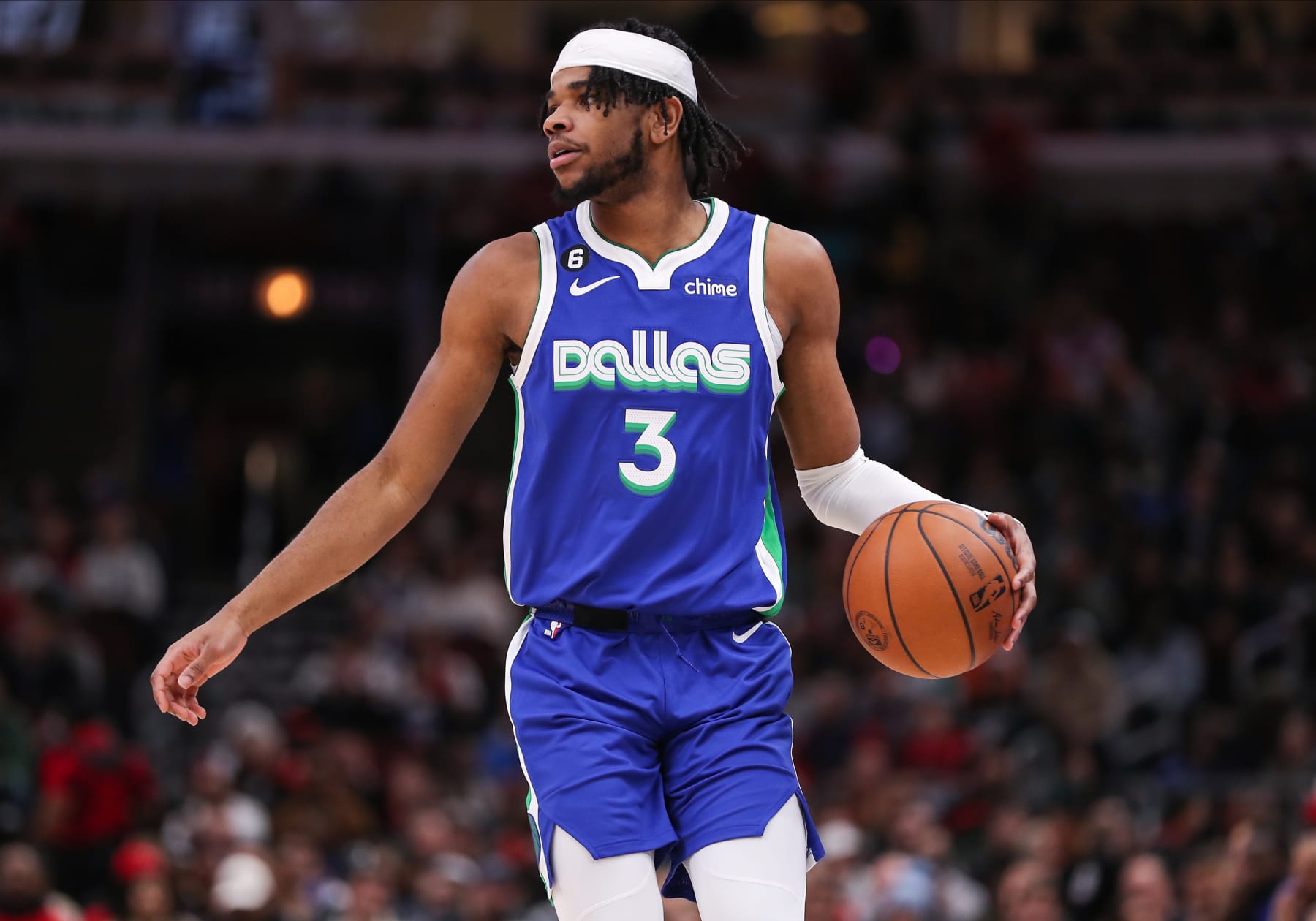
Jaden Hardy
Hardy is a walking bucket. Well, at the G League level he is, at least. During 11 games with the Texas Legends, he's poured in 28.8 points per tilt, shredding defenses with a wholly impressive 54.9/49.0/88.4 slash line.
The Mavericks just need that production to carry over to the big-league level, though, admittedly, they haven't given much of a chance to do that.
He's played 64 minutes over nine games with Dallas so far, struggling to find his niche in limited action. He's just 14-of-40 from the field (35 percent) and a paltry 1-of-12 from the perimeter (8.3). While his non-NBA production and pedigree suggest he could bounce back in a big way, that potential can't help with this evaluation.
Grade: C-
Denver Nuggets
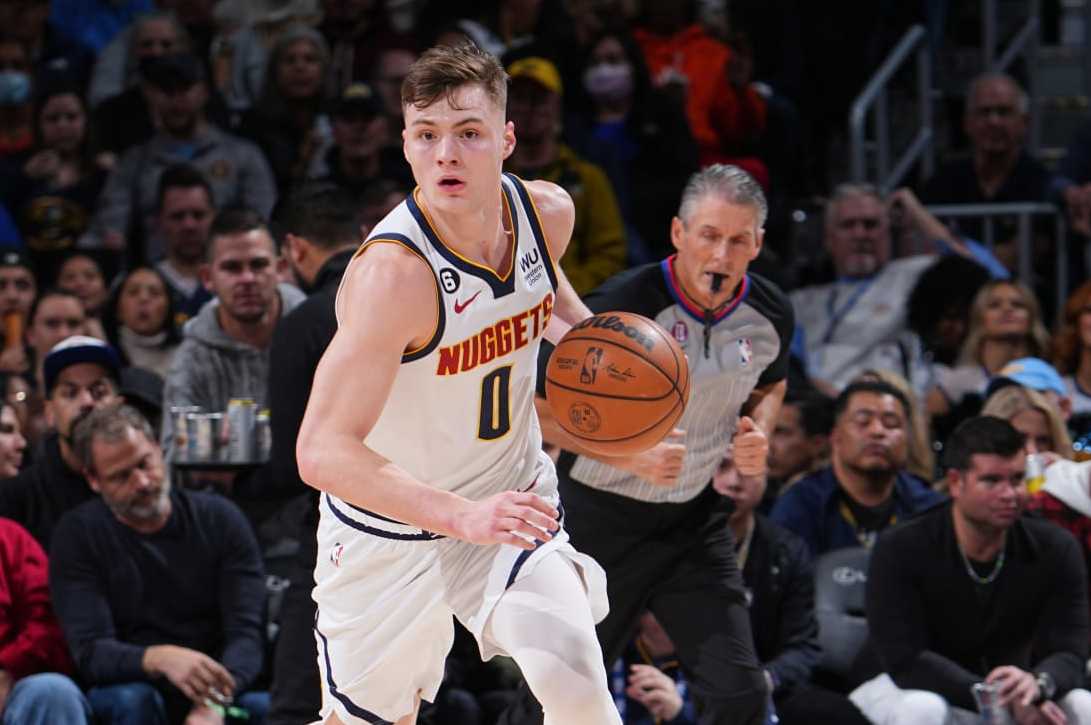
Christian Braun
Braun was billed as the most NBA-ready rookie the Nuggets nabbed on draft night—they added him with the 21st pick and later acquired Peyton Watson, the 30th selection—and that has played out as expected. While Braun has mostly been a regular member of Denver's rotation, Watson has made just six NBA appearances on the season (only two since October).
Braun is an energizer whose work doesn't always make it to the stat sheet. He competes on defense, flies in the open floor and makes quick decisions.
All of that said, though, the stuff that is showing up on the stat sheet hasn't been great. His 43.3/31.3/55.0 slash line underwhelms on every level. His 7.4 player efficiency rating is less than half of the league-average mark of 15. Most damning, though, is his minus-5.0 estimated plus-minus, which ranks close to last in the league.
Grade: C-
Detroit Pistons
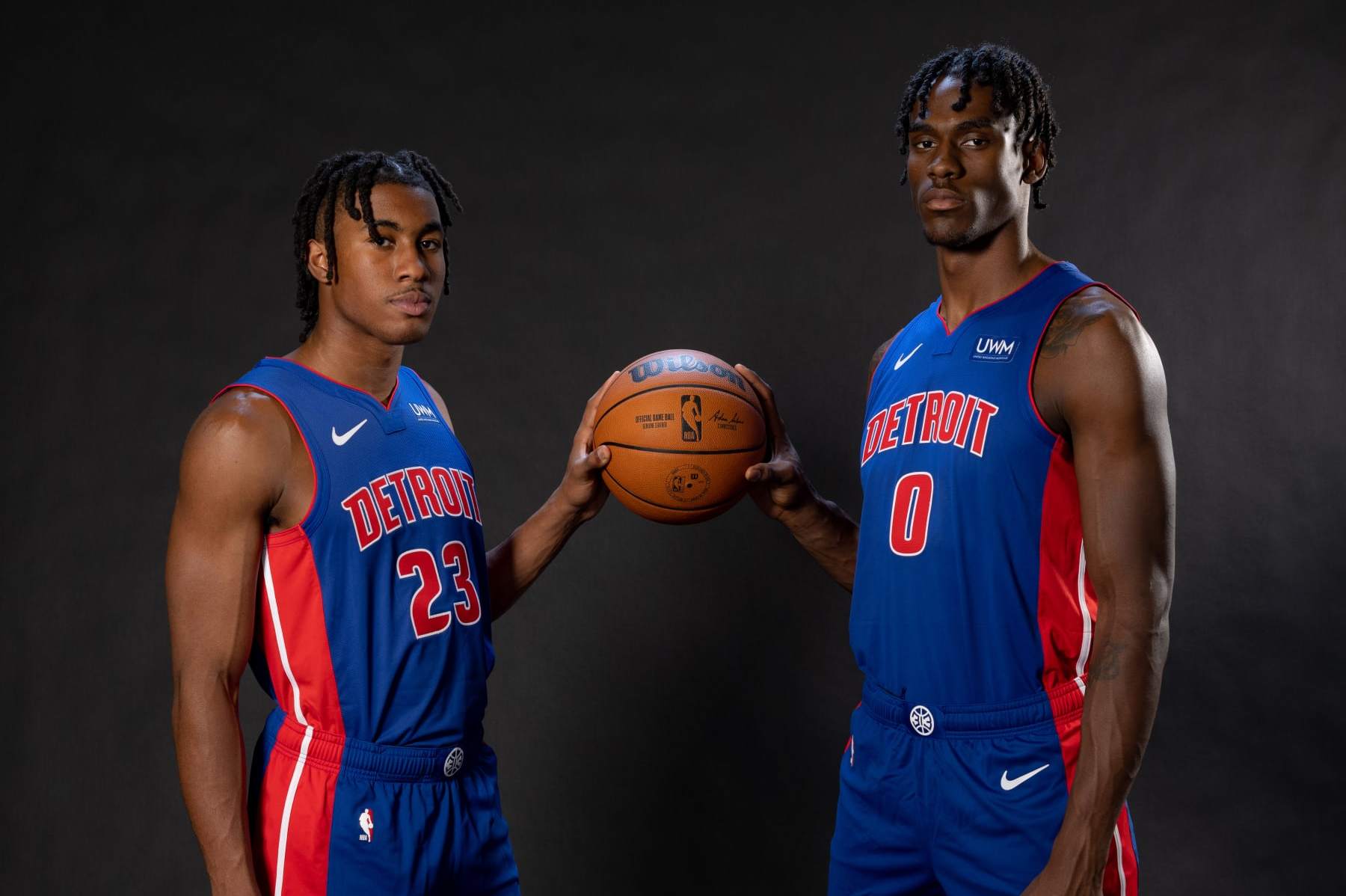
Jalen Duren
If everything goes according to plan for the Pistons, the 2022 draft will loom as a critical point of their rebuilding project. They walked away from the talent grab with a pair of lottery picks, spending the No. 5 selection on Jaden Ivey and acquiring Duren, the No. 13 pick.
The early read in Motor City says the franchise did incredibly well for itself on draft night.
Duren, who only turned 19 in November, can be prone to foul problems and missed rotations, but he's already an effective rim-runner. He paces the rookie class with 8.2 rebounds per game and averages 7.2 points (on 62.2 percent shooting) in just 23.2 minutes per outing. He's a productive roll man (59th percentile as a pick-and-roll screener) and has flashed some intriguing vision on short rolls.
Grade: A
Jaden Ivey
Ivey might be a 20-year-old rookie in the infant stage of his career, yet he already feels like a known commodity.
Powered by blazing speed and explosive athleticism, he ranks third among rookies with 15.5 points per night and joint first with 4.0 assists. He isn't the most efficient shooter you'll find (42.1 percent overall, 30.8 percent from range), but when he finds an attack lane, he can exploit it. Only top pick Paolo Banchero averages more points on drives among first-year players than Ivey's 6.0 per night.
Fine-tuning his shot selection is a must, and he could do a better job of leveraging that speed threat into better separation. Still, all rookies encounter growing pains, and Ivey hasn't shown any that are particularly worrisome.
Grade: B+
Golden State Warriors

Ryan Rollins
While Warriors' first-round pick Patrick Baldwin Jr. just missed our cut-off (36 minutes), Rollins has found just enough floor time to qualify for this exercise (54).
Admittedly, there isn't much to evaluate with a sample size this small, especially since we aren't factoring Rollins' G League production (20.3 points and 4.4 assists over 10 contests) into the equation.
At the NBA level, he's only cracked double-digit minutes in one of his 10 appearances. Unsurprisingly, he hasn't had many shot attempts, though from the small sample at hand, he's doing better on threes (3-of-9) than twos (22.2). While his playmaking sometimes popped in the G League, that hasn't been the case in the bigs, where he's been prone to bouts of tunnel vision and managed only three assists against 15 turnovers.
Grade: C-
Houston Rockets

Jabari Smith Jr.
Smith's season-long stats may not show it, but he's giving the Rockets reasons to feel good about using this summer's No. 3 pick to bring him to Space City.
Each month has been better than the last. In eight October outings, he averaged 11.9 points with a 46.2 true shooting percentage. His scoring average slightly dipped in 12 November games (11.5), but his true shooting percentage climbed to 51.7. Through nine December outings, both his scoring output (12.4) and true shooting (54.3) have both bested his previous highs.
He is, slowly but surely, finding his way and becoming the floor-spacing (2.0 threes per night on 34.1 percent shooting), paint-protecting (six games with multiple blocks) unicorn Houston hoped it was getting.
Grade: B-
Tari Eason
The rebuilding Rockets are, objectively speaking, not a good team—but when Eason is on the floor and doing all of his do-it-all things, they function like a decent one. Overall, Houston sits 27th with a minus-6.1 net rating, but it has generated a plus-0.6 mark—would rank 15th—over Eason's 566 minutes.
In statistical terms, he ranks favorably among the Association's top difference-makers. His plus-11.9 net differential slots him in the 93rd percentile. His activity level is elite. He ranks in the 85th percentile or better in block percentage, steal percentage and both offensive and defensive rebounding percentage. Oh, and his shooting is already way ahead of schedule, as he's converting 36.7 percent of his threes and 83.3 percent of his foul shots.
His traditional numbers aren't loud enough to make major noise in the Rookie of the Year race (8.6 points, 5.3 rebounds and 1.2 steals in 18.9 minutes), but advanced metrics like him as much as any freshman. He leads all rookies in Overall RAPTOR and ranks third among freshman in estimated plus-minus. That's not too shabby for the No. 17 pick.
Grade: A+
Indiana Pacers

Bennedict Mathurin
Few teams have had more reasons to celebrate their draft haul than the Pacers. Mathurin is the biggest—though not the only—reason why.
Among rookies, Mathurin, the No. 6 pick, trails only top selection Paolo Banchero in points per game with 17.9. His contributions have been a little one-note—he's averaging more turnovers (1.8) than assists (1.5) and isn't a huge factor on the glass (4.1 rebounds in 29 minutes per game)—but, wow, that one note sounds sweet.
He can get fiery hot from three (nine games with three-plus triples), defenses can't keep him off the line (5.8 free-throw attempts) and he's an asset in the open court (68th percentile in transition). It's not like his numbers really need a lift, but if Indy ever slotted him into the starting lineup, he could take his production even higher.
Grade: A+
Andrew Nembhard
Indiana snatched up Nembhard with the top pick of the second round, and rival front offices already must be questioning how they let him fall that far.
He might be older than most players in his draft class (turns 23 in January), but that experience shows in his poise and polish. All three levels of his 47/38.7/87.5 slash line impress, as does the fact he's tallied 3.8 assists against just 1.4 turnovers in 25.6 minutes a night.
Nembhard nabbed a starting spot when Chris Duarte went down, and the latter could have a tough time wrestling the gig away from the former.
Grade: A
Los Angeles Clippers

Moussa Diabaté
The championship-chasing Clippers don't have a ton of time to invest in their youth, but their perpetual need for injury replacements has allowed both of their freshmen to meet our minutes requirement.
Diabaté, the 43rd pick playing on a two-way pact, has seen the most action of the two, albeit while logging 90 minutes in eight outings. His blend of size (6'11", 210 lbs), athleticism and versatility allow him to switch between both the 4 and 5 spots, which helps his usage and increases his value.
The Clippers have posted a positive differential with Diabaté at center (plus-0.1 points per 100 possessions), and that could be a motivation for upping his floor time going forward.
"We know what he brings every night with the switching, rolling to the basket, offensive rebounds," Clippers coach Tyronn Lue said, per All Clippers' Joey Linn. "Just his energy, running the floor, he does a lot."
Grade: B
Jason Preston
This is actually Preston's second season in L.A., as he first arrived by way of a 2021 draft-night deal with the Orlando Magic. Since his entire would-be rookie season was erased by a foot injury, though, this has become his actual freshman campaign.
His playmaking potential initially intrigued, as the Clippers spent ample time searching for more ball-movers around Kawhi Leonard and Paul George. Since Reggie Jackson and John Wall have stabilized the point guard position, though, minutes have come few and far between for Preston.
He has appeared in just five games for a total of 44 minutes. Only one of those contests was decided by fewer than 13 points. There isn't a ton to read from mop-up duty, but the early signs show promising passing (eight assists against four turnovers) and limited scoring punch (11.5 points per 36 minutes on 37.5/25/0 shooting).
Grade: C-
Los Angeles Lakers
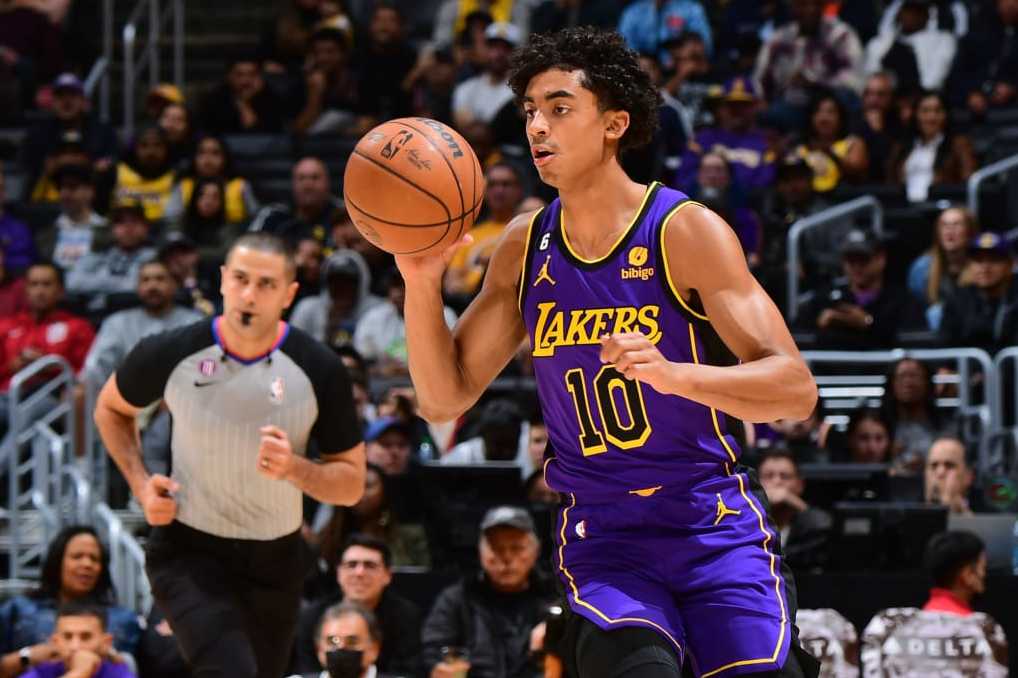
Max Christie
No matter what you think of the Lakers' chances this season, they're clearly hoping to win something of substance. The fact they think Christie, the 35th pick, can help with those pursuits speaks to his skills and approach.
He isn't yet a nightly regular, but he's been called upon to cover up absences often enough to log 192 minutes (26th-most among this draft class). During that floor time, he has flashed a reliable three-ball (12-of-30, 40 percent) and some defensive versatility.
His inside-the-arc shooting hasn't been good (27.8 percent on twos), and he hasn't been much of a playmaker at either end. Still, the fact he hasn't appeared over his skis when called upon is not an insignificant accomplishment.
Grade: B-
Memphis Grizzlies

Jake LaRavia
The Grizzlies could apparently teach the Warriors a thing or two about balancing two timelines. That's because Memphis both sits atop the Western Conference and has five different rookies on the roster, all of whom have played at least five NBA games so far.
Now, they aren't all getting regular minutes—Kennedy Chandler, Vince Williams Jr. and Kenneth Lofton Jr. have all logged fewer than 150—but LaRavia saw significant floor time right out of the gate. His role has diminished since (he's played just three of the team's last 10 games), but his lights-out long-range shooting could get him back on the hardwood at any time.
While LaRavia ranks 19th among rookies in minutes (312), he's tied for ninth in three-point makes (19). And among first-year shooters with 50-plus three-point attempts, LaRavia ranks comfortably in the top 10 with his 38-percent conversion rate. LaRavia just needs to up his three-point volume and aggressiveness or elevate the other parts of his game to re-enter the rotation.
Grade: C+
David Roddy
During the draft, the Grizzlies gave up feisty defender De'Anthony Melton to add Danny Green, who's coming off a torn ACL, and Roddy, the No. 23 pick. While Green's expiring deal could have value on the trade market—as he's apparently well-aware—the Grizzlies were clearly big fans of Roddy.
It's already evident why.
He may not have a standout skill, but he's versatile (he has played the 2, 3 and 4 spots) and active. He's also positioned to not only suit up alongside Memphis' stars, but to actually support them with corner threes (37.8 percent since Nov. 1) and point-blank buckets (67.9 percent in the restricted area).
Grade: B-
Miami Heat

Nikola Jović
The Heat have had a hard enough time getting their veterans going (and healthy) that there haven't been many opportunities to let their youngsters loose.
Jović, this summer's No. 27 pick, leads Miami's rookies with 13 appearances, but they've only totaled 185 minutes. He has dropped a few hints about possibly being ready for more—he netted 31 points over a two-game stretch in mid-November, then immediately followed it with eight assists over his next two outings—though his defense probably needs improvement to earn a regular workload.
Still, you see why the Heat wanted him in South Beach. There aren't a ton of 6'10" players with his blend of handles, vision and creativity. You just wish the skill set would yield better results. So far, he's matching his 0.8 assists with 0.8 turnovers and shooting just 39.3 percent overall and 22.6 percent from range.
Grade: C-
Orlando Robinson
Undrafted out of Fresno State, Robinson has already been waived twice by the Heat: first near the end of training camp, then again in late November. He keeps managing to find his way back to Miami, though, as a break-glass-in-case-of-emergency big man.
The Heat have only trotted him out five times, but in two of those games, he topped 32 minutes. He proved moderately effective in both and owns a positive plus/minus over his 80 minutes (plus-17, joint eighth-best among rookies).
He's not an elite athlete, nor the most nimble defender, but he has given Miami a paint presence when it has desperately needed one. That's a decent return for such a minimal investment.
Grade: C
Milwaukee Bucks

MarJon Beauchamp
While Beauchamp, the No. 24 pick, joined a team with championship aspirations, he had a chance to play his way into regular floor time. The Bucks, after all, needed more lengthy, athletic defenders and general depth on the wing, and the rookie had the potential to check both boxes.
And for the most part, he has.
He has already made 19 appearances (including seven starts) totaling just under 300 minutes. His offense comes and goes (though he has had five double-digit scoring efforts), but his defense has been top-notch. Despite spending time on some marquee matchups, he has allowed the lowest field-goal percentage among freshmen who have played 10 or more games (36.5 percent).
Grade: B+
A.J. Green
Undrafted and on a two-way contract, Green wasn't guaranteed to get any run with the Bucks this season. However, his dead-eye shooting from distance has allowed him to hit the hardwood a dozen times, albeit for 69 total minutes.
He understands his role as a spacer and isn't hesitant to launch. His 47.4 three-point percentage stands out on its own, as it's the fifth-best conversion rate among players with 15-plus three-point attempts. Factoring in volume, though, takes that accuracy next-level, as he's averaged 9.9 attempts from distance per 36 minutes.
Milwaukee isn't exactly flush with shooters (17th in three-point percentage), so there's a chance for Green to keep getting relatively regular minutes. However, he'll have to prove he can hold up defensively, since he lands in just the 14th percentile in estimated defensive plus-minus.
Grade: B-
Minnesota Timberwolves
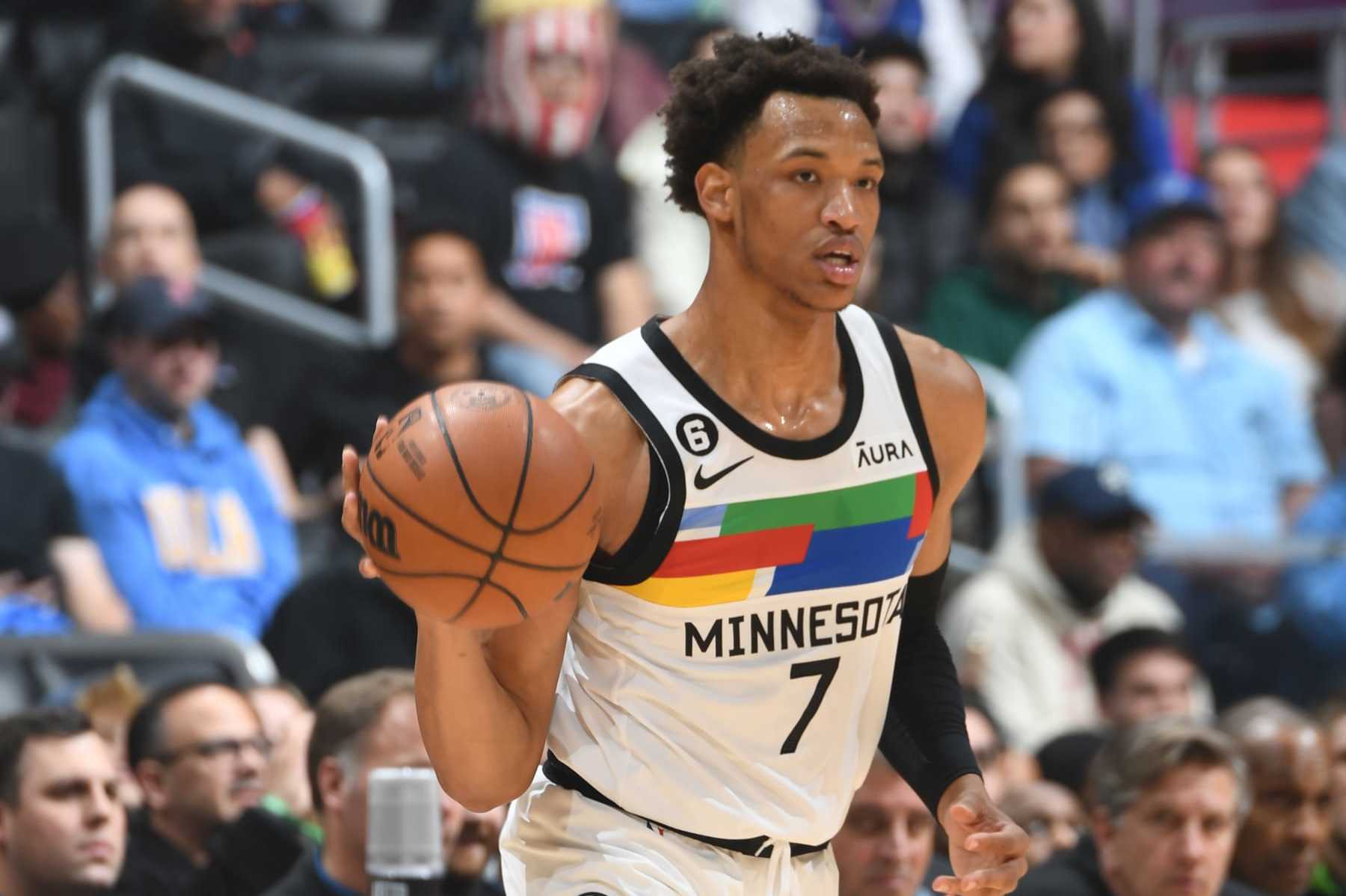
Wendell Moore Jr.
Moore appeared in just two of Minnesota's first 19 games, but he has since played a dozen consecutive contests.
Calling him a rotation regular feels like a little much, though, since he's seen fewer than seven minutes in all but three of his outings. With such little floor time, he hasn't had a chance to make an impact, for better or worse. In fact, he has taken one or zero shots in nine of his 14 outings.
His shot profile is interesting, at least, since it's almost exclusively threes and point-blank chances. He has converted an impressive 81.8 percent of his looks within three feet but only 18.2 percent of his threes. There's nothing too exciting, nor alarming about what he's done in limited action.
Grade: C
New Orleans Pelicans
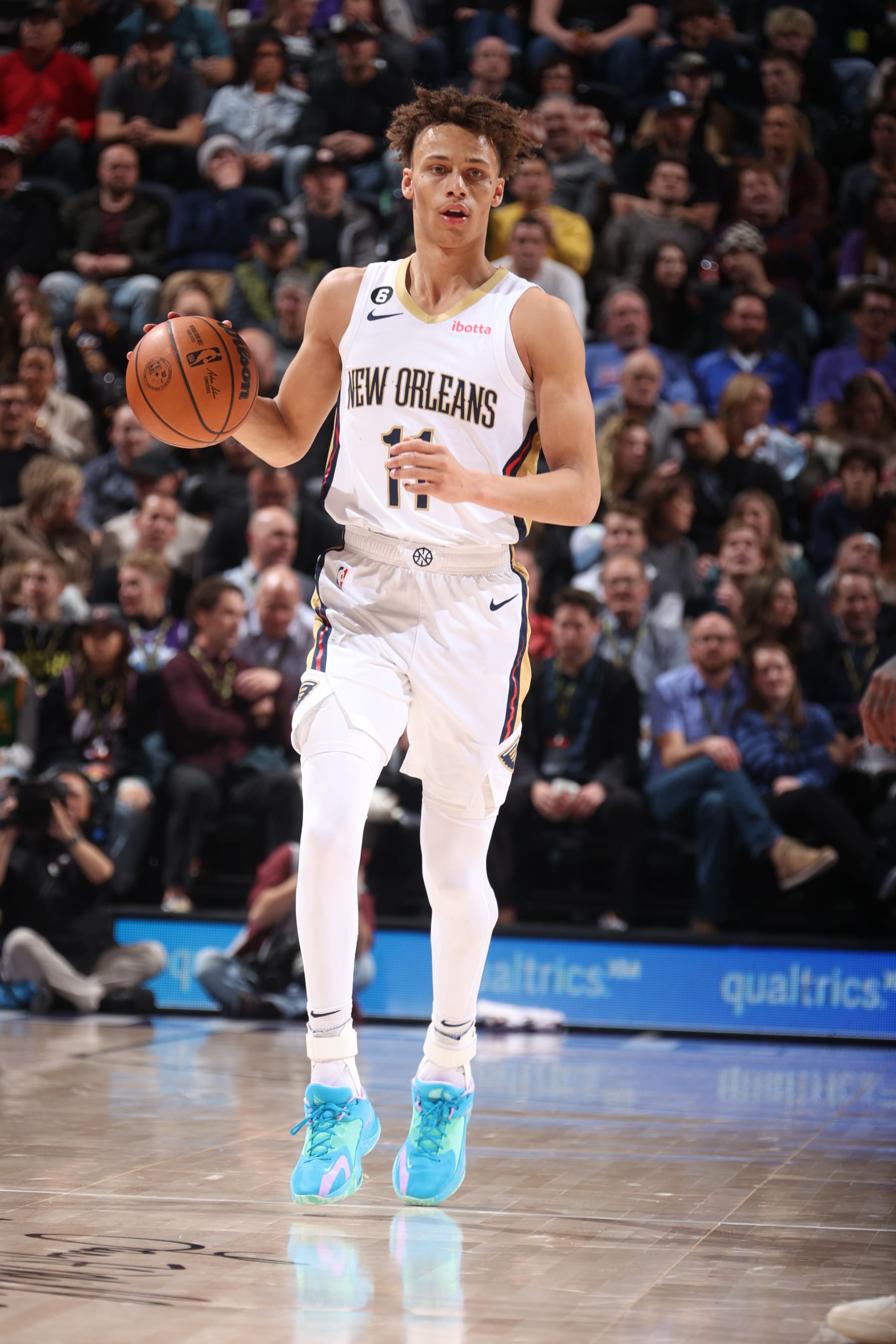
Dyson Daniels
Daniels, a 6'8" playmaker who was taken eighth overall this summer, boasts a deep bag of two-way tricks. Among his many skills, apparently, is being a rapid learner.
He didn't have a regular rotation spot for the season's first month, yet he's already a critical contributor in the Crescent City. His defense is ahead of his offense, and that's saying something considering everything he's doing at the game's most glamorous end. He's shooting 50 percent from the field and 41.7 percent from three (albeit on limited volume), tossing 2.3 assists against 0.9 turnovers and ranking in the 80th percentile on points per shot attempt.
The defense, though, is truly special—and not just by rookie standards. Among all players, he lands in the 97th percentile in defensive estimated-plus minus and is tied for 23rd in Defensive RAPTOR. Opponents are shooting 3.4 percentage points worse against him than on average and are 8.6 points below their norm on attempts within six feet.
Grade: A
Oklahoma City Thunder
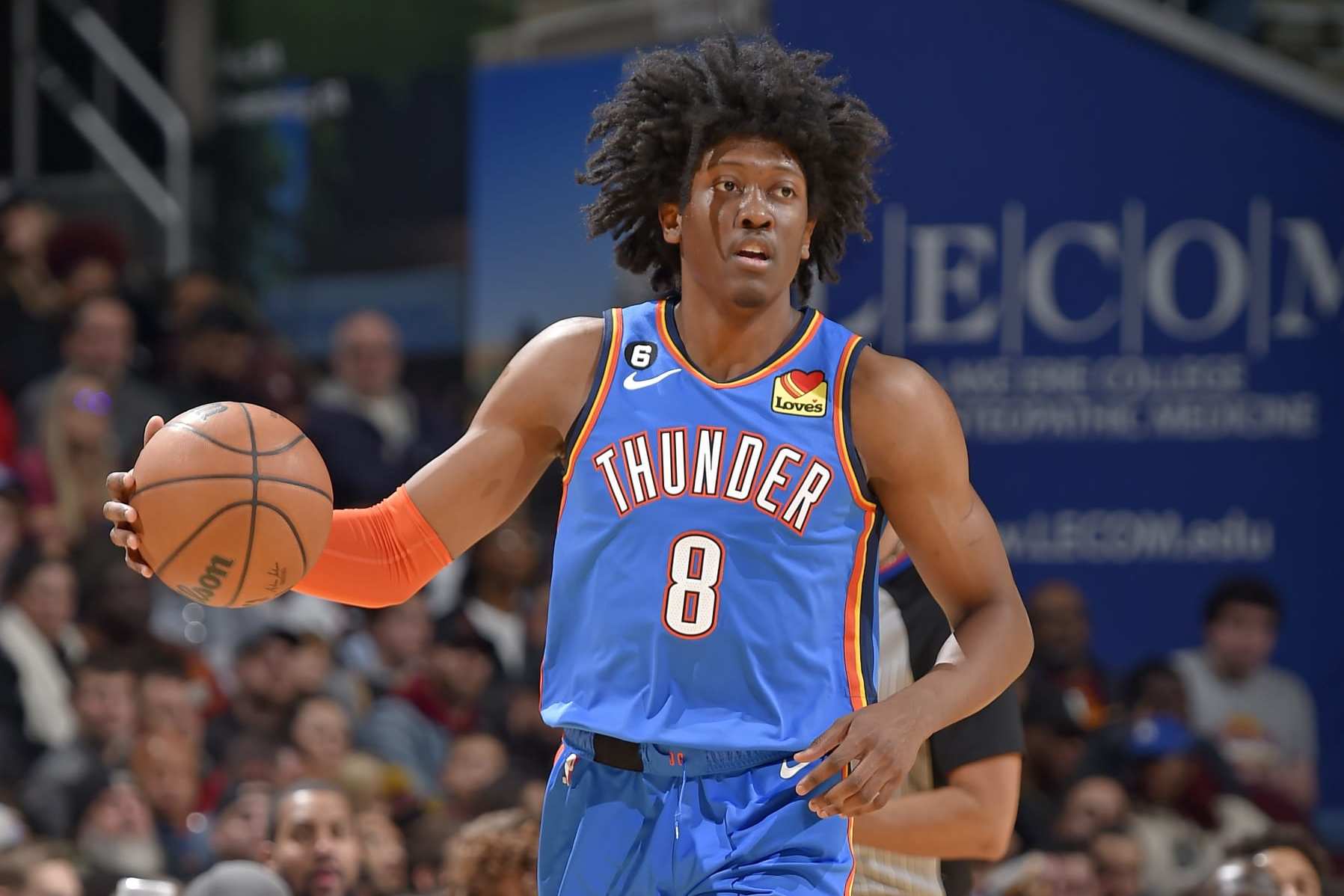
Jalen Williams
Inside the arc, Williams can do no wrong. If his three-ball ever catches up to his two-point proficiency, defenses will be in real trouble.
Of course, it's not like defenses are having a ton of luck against him as it is. His 10.8 points per game rank sixth-best among rookies, and his 51.1 field-goal percentage is the best among the top 10. Overall, he's in the 86th percentile in the shooting at the rim (70 percent) and the 79th percentile on mid-range shots (46).
He could be a better defensive playmaker and defender in general given his combination of size (6'6") and length (7'2" wingspan), but his strengths are razor-sharp, and there's no reason to believe he can't iron out his weaknesses going forward.
Grade: A-
Ousmane Dieng
Long-term, there is plenty to like about the potential of Dieng, this summer's 11th overall pick. The 6'10" playmaker, who only turned 19 in June, boasts a towering two-way ceiling featuring everything from shot-creation to pull-up jumpers to disruptive, versatile defense.
The present, however, hasn't been great, and that was true even before his rookie campaign was sidetracked by a broken wrist.
He was moderately effective as a stopper and ball-mover, but he couldn't score. He averaged just 4.4 points in 15.7 minutes per game while posting a grisly 42.4/29.4/25 shooting slash. Efficient scoring will be his biggest test going forward, and he looks a long way from ever receiving a passing grade on that front.
Grade: C-
Orlando Magic
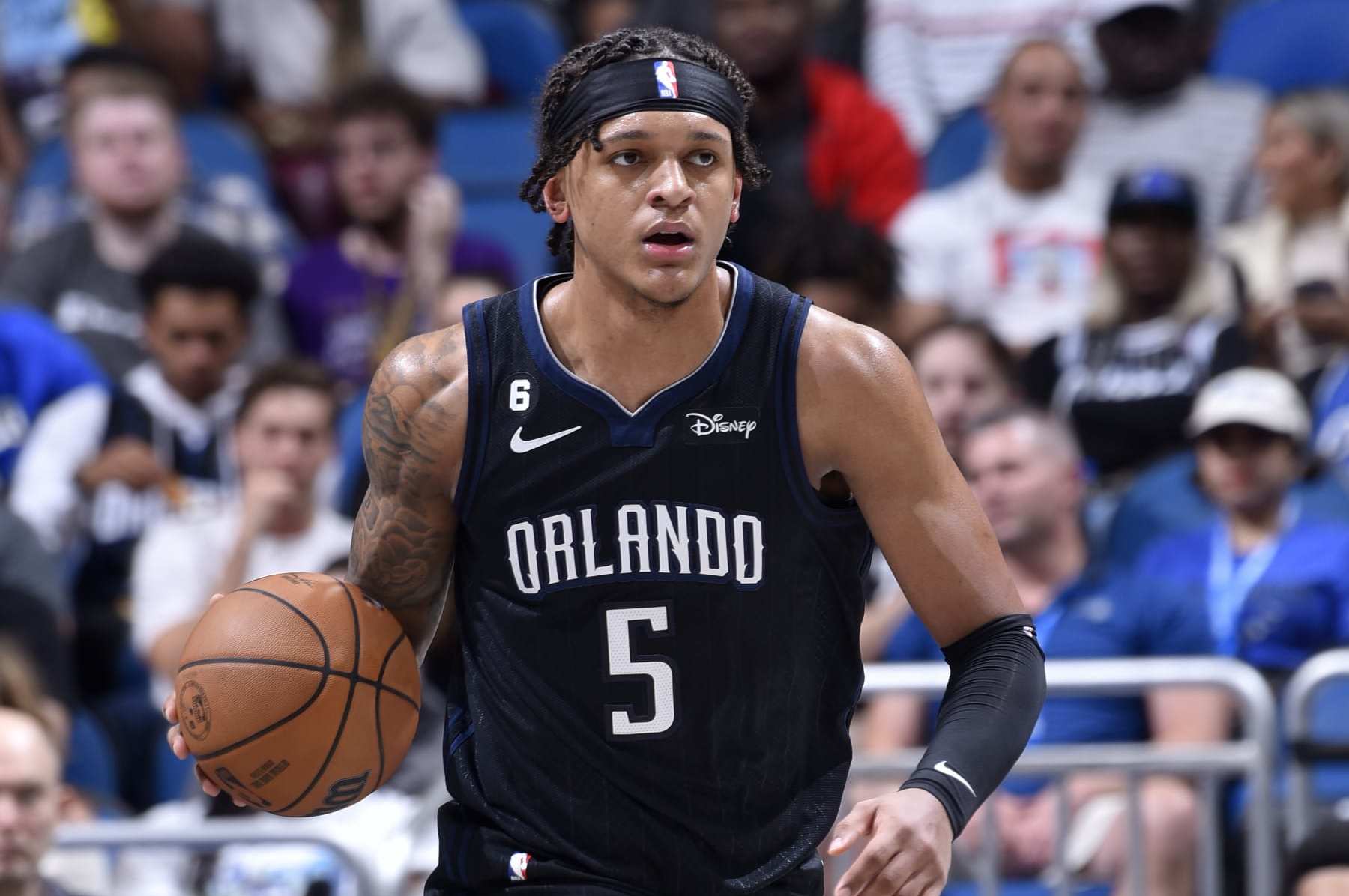
Paolo Banchero
Banchero, this year's top pick, is off to such an explosive start that weighing him against his present peers almost feels unfair. He isn't just the most productive freshman this season, he has some of the best numbers this league has seen from a first-year hooper. If the campaign closed today, he'd become just the eighth rookie to average at least 20 points, six rebounds and four assists.
"His shot-making ability is crazy," Magic swingman Terrence Ross told ESPN's Andrew Lopez. "His IQ is very good at 6'11", 260 [pounds]. The dude can handle the ball, throw lobs, finish at the bucket. He can play like a big man, play like a guard."
Defenses already look helpless against Banchero, who leads all rookies with both 21.8 points and 4.0 assists. He averages the 15th-most points in the entire league on isolations (3.5). He could up his efficiency (44.8/31.3/76.1 slash) and trim his turnovers (3.0), but those criticisms feel nitpicky for a 20-year-old who's leading an NBA attack.
Grade: A+
Caleb Houstan
Houstan, the second pick of the second round, has ventured in and out of Orlando's rotation.
His appeal is tied to his blend of size (6'8") and shooting, but the latter has been more serviceable than spectacular. You can't complain about a 35.1 percent conversion rate from three, but you wouldn't rave about it, either.
He isn't an elite athlete, nor a dynamic creator, so he'll have to sharpen his shooting if he wants to expand his role going forward.
Grade: C-
Portland Trail Blazers

Shaedon Sharpe
Generators don't drum up the type of electricity Sharpe brings to the hardwood. Bunnies envy his hops, and he makes the incredible appear effortless.
Now, he just needs these flashes of elite play to turn into something more substantial.
He's been fine (8.1 points on 46.3 percent shooting in 20 minutes per night), but he falls back into the shadows more often than you'd like. Granted, he's far from the first mouth to feed in Portland, but he's had five different games with two or fewer points, and he logged double-digit minutes in all of them.
Grade: B-
Jabari Walker
The fact that Walker, the 57th pick, has logged 131 minutes so far is a win on its own. It's also, perhaps, the only thing working in his favor for our purposes.
His defense has been decent, but his offense is non-existent. Again, there isn't much volume, so you can only read so much into the numbers, but they aren't pretty: 8.5 points per 36 minutes on 37.5/27.3/66.7 shooting.
Grade: C
Sacramento Kings
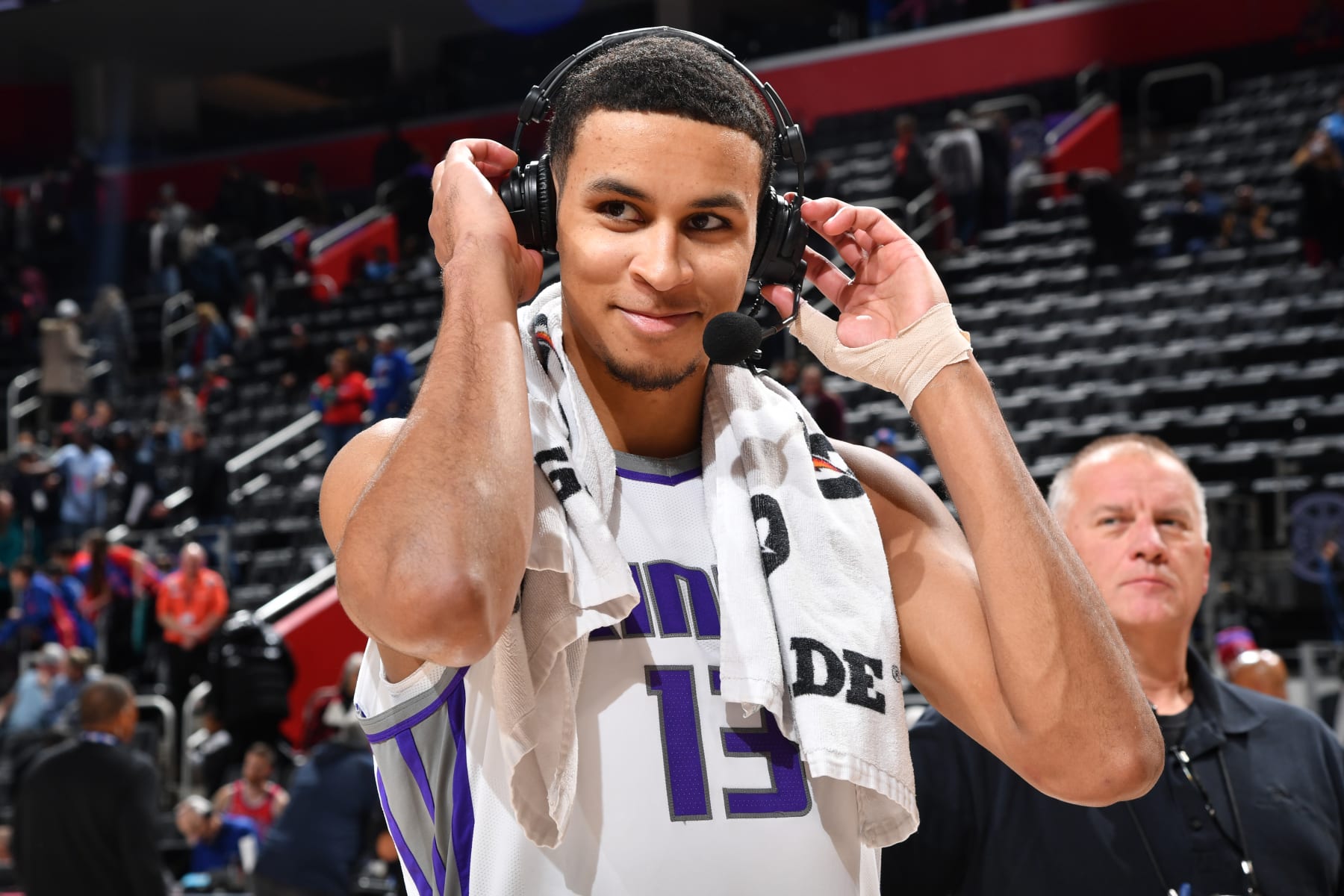
Keegan Murray
Life apparently moves at ridiculous speed for Murray.
He is two months into his NBA career, and he has already started strong, crashed into the rookie wall and plowed his way through it. His splits have made him unrecognizable from one month to the next:
- October: 17.4 points per game, 49.3/39.5/85.7 shooting
- November: 8.0 points per game, 33.9/27.0/86.7 shooting
- December: 14.3 points per game, 48.9/48.3/69.2 shooting
While he was regarded more as a finisher than a creator, he's actually been better on pull-ups (43.2 percent overall, 38.5 percent from three) than he has on catch-and-launch shots (38.7 and 37.7, respectively). Similarly, he's had more success when taking three-to-six dribbles before shooting (46.2 percent) than he has when shooting without a single bounce (43.9).
If he maintains this off-the-dribble effectiveness while improving on the chances created by others, he could be special. As it stands, he's been rock-solid.
Grade: B
San Antonio Spurs
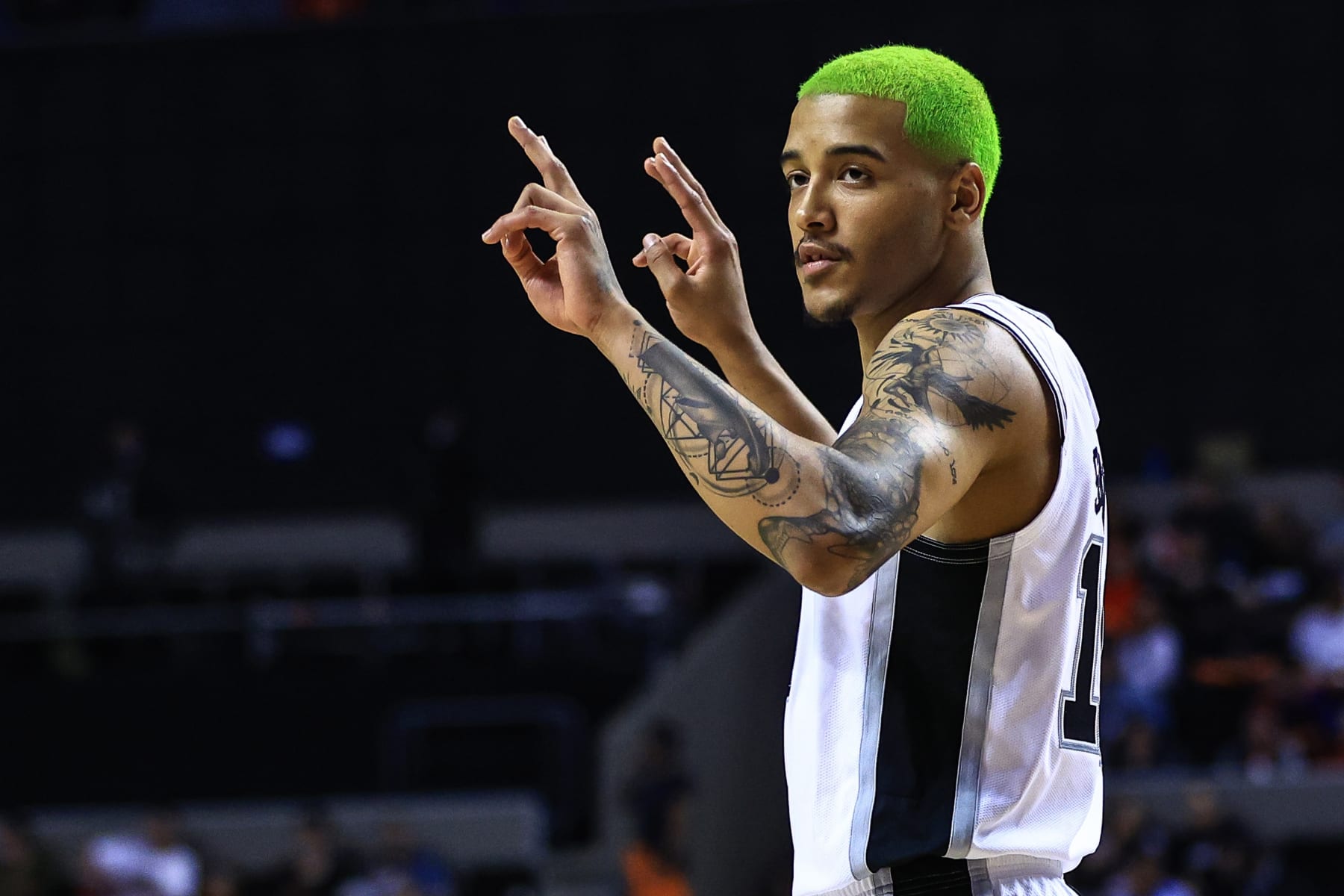
Jeremy Sochan
As was the case before the draft, Sochan remains a tricky evaluation.
He is a two-way playmaker who stands out as a jumbo-sized quarterback (6'9", 230 lbs) and disruptive defender. He's also one of the least threatening shooters in the league. He has misfired on all but nine of his 49 three-point looks, and he's been so brutal from the line (12-of-28, 42.9 percent) that he's resorted to trying one-handed free-throws.
On balance, there's more good than bad here. Obviously, his offensive game has to improve, but otherwise, his skill set is drool-worthy when paired with his frame.
Grade: B-
Malaki Branham
Branham, the 20th pick, punched his NBA ticket with dynamic shot-making.
He hasn't shown enough of his signature skill in the Alamo City.
He isn't a super-prominent member of the rotation (17.3 minutes per night), and maybe that's making it hard to find a rhythm. If he's going to serve as a spark plug, though, he has to find more reliable ways to find his touch. He's averaging a modest 12.2 points per 36 minutes while shooting 38.5 percent overall and 28.8 percent from range.
Grade: C-
Toronto Raptors
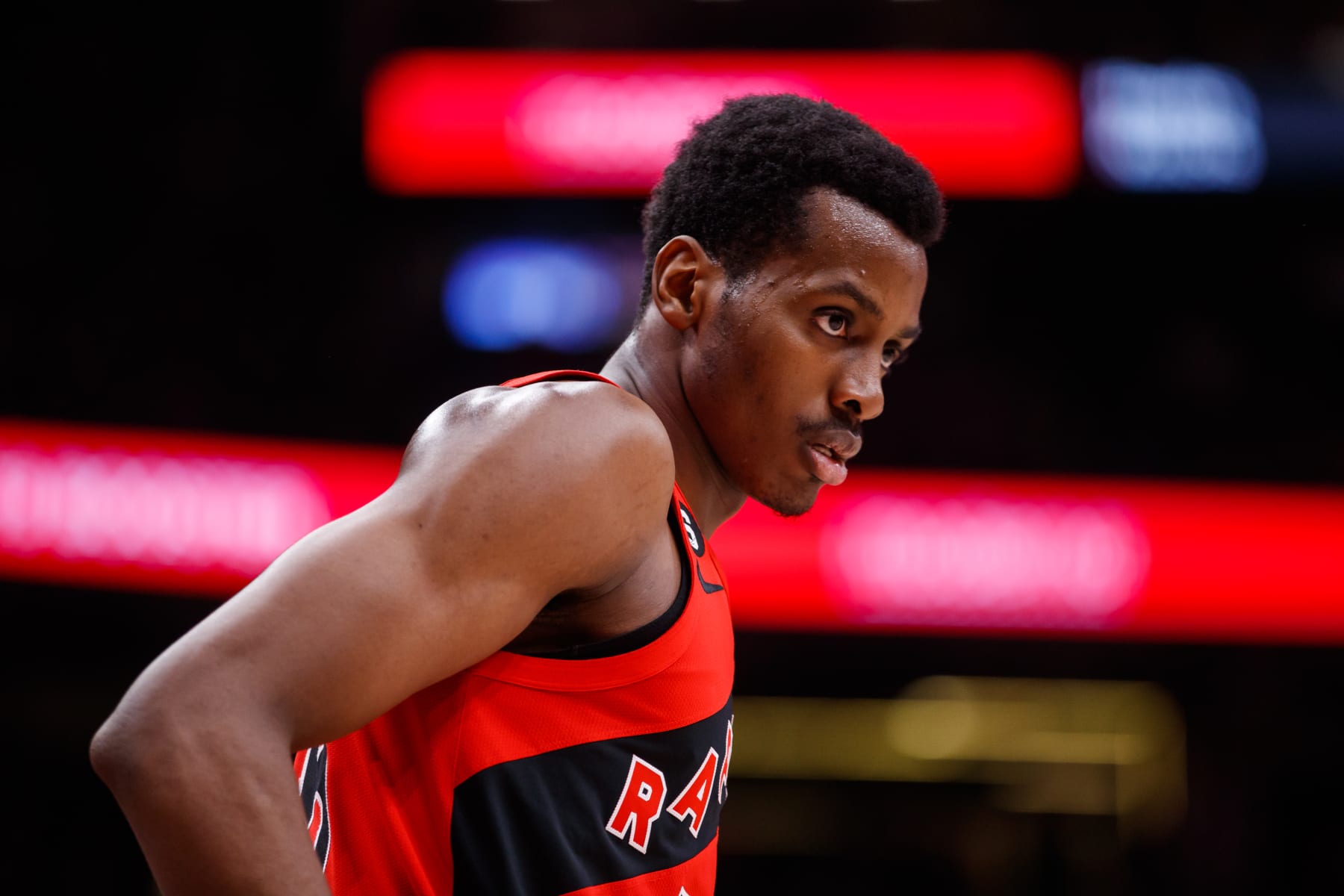
Christian Koloko
Regardless of what the Raptors had planned for Koloko, he has to be exceeding expectations.
He was this summer's 33rd pick, and he has logged the 15th-most minutes in his draft class (504). He has suited up in 30 of Toronto's 31 games and even made 17 starts. He has supplied this group with paint protection, tallying 2.7 rejections per 36 minutes.
However, there aren't many layers to his game, which should probably be expected, since he picked up the sport later than most. Still, you'd like to see more from him on the glass (7.4 rebounds per 36 minutes) and from close range (57.1 percent shooting inside of three feet).
Grade: B-
Utah Jazz
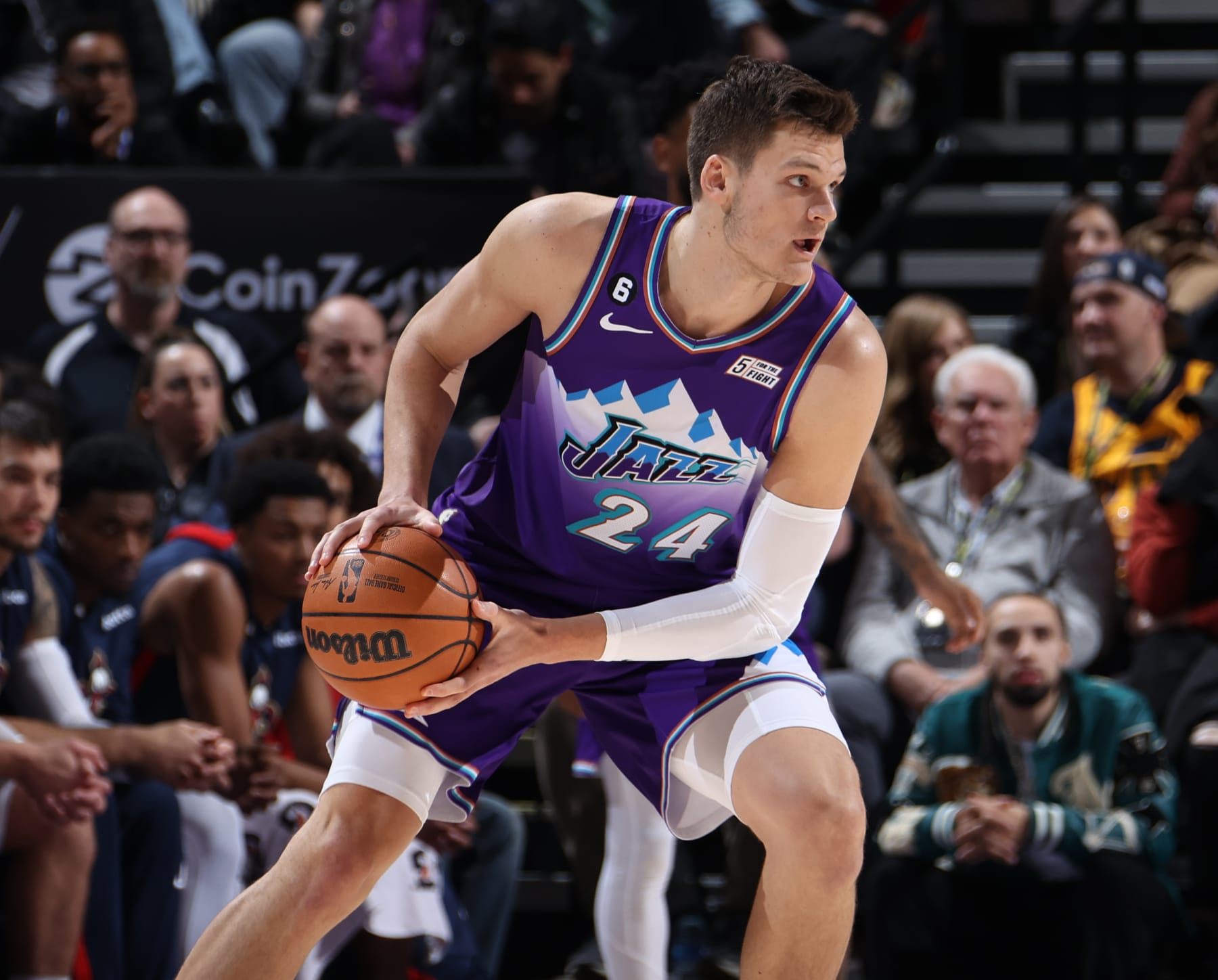
Walker Kessler
It isn't fair to compare Kessler, the No. 22 pick, to his predecessor in Salt Lake City, Rudy Gobert. After all, the former is a 21-year-old rookie while the latter is a 30-year-old with three Defensive Player of the Year awards and three All-Star selections on his resume.
Let's do it anyway, though. If nothing else, it should increase the Jazz's appreciation of their new man in the middle.
Kessler, the top shot-blocking rookie, is averaging 3.9 rejections per 36 minutes and holding opponents to 53.1 percent shooting at the rim. Gobert, meanwhile, is at 1.4 swats per 36 (his career-high is 3.4) with 59.9 percent shooting allowed from close range. Kessler is also shooting a ridiculous 75.4 percent, while Gobert is at 65.2 and has never topped 71.3. Overall, Kessler has contributed 0.199 win shares per 48 minutes compared to Gobert's 0.190.
This doesn't mean Kessler is an upgrade now or will be in the future. It does, however, contextualize just how absurdly effective he's been, particularly on the defensive end. Defensive RAPTOR slots him best among rookies and tied for 21st overall.
Grade: A+
Ochai Agbaji
Given Agbaji's age (22) and the state of Utah's wings upon his arrival, one could have reasonably assumed he'd step right into a significant role.
Two months into his professional career, though, he's encountering nightly challenges for floor time. In fact, his role is small enough (124 minutes in 15 games) that serious consideration was given to omitting him here in favor of fellow Jazz freshman Simone Fontecchio. Since Agbaji is five years younger, though, he got the nod for theoretically holding more importance in this franchise's future.
As for right now, though, there just hasn't been much to celebrate with Agbaji. The polish and poise you figured he's shown has yet to surface. His 46.6 true shooting percentage ranks 372nd among the 395 players who've logged 100-plus minutes, while his minus-6.7 box plus/minus is 390th in that same group.
Grade: D
Washington Wizards

Johnny Davis
The Wizards are trapped in a tailspin, having lost a league-worst 10 consecutive games. If any team needs a spark right now, it's this one.
You might think, then, that Davis, this summer's 10th overall pick would be getting ample opportunities to provide. Believe it or not, though, his floor time is trending down—and it wasn't exactly plentiful to begin with. He's yet to see even 10 minutes in a game this season, and he has logged exactly zero of them in December.
Davis struggled mightily at Summer League (shooting 27.6 percent) and was even worse in the preseason (2-of-21 in four games). During the regular season, he's either been benched, in the G League or ineffective in limited action (minus-0.1 player efficiency rating, minus-13.4 box plus/minus over 45 minutes). It's too early to drop the dreaded bust label on him, but this is an abysmal return on a top-10 pick.
Grade: F
Statistics courtesy of Basketball Reference, NBA.com, FiveThirtyEight and Cleaning the Glass and accurate through Monday.
Zach Buckley covers the NBA for Bleacher Report. Follow him on Twitter, @ZachBuckleyNBA.
